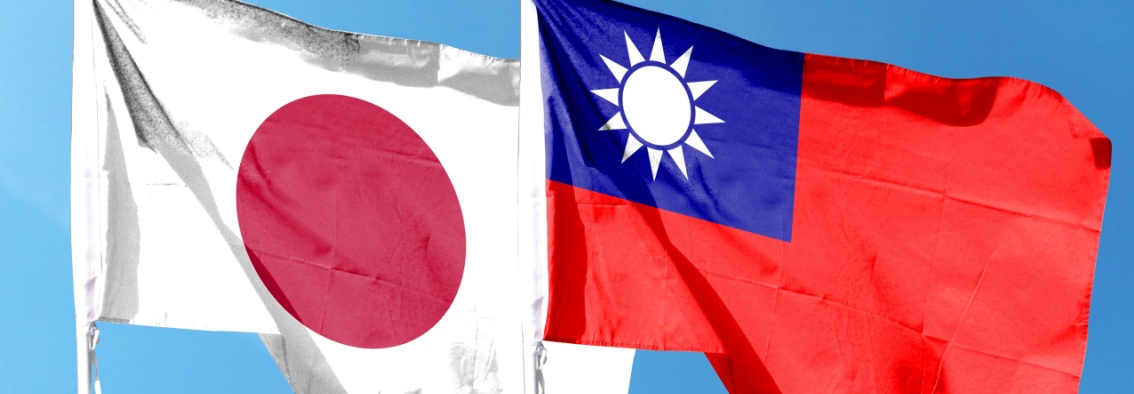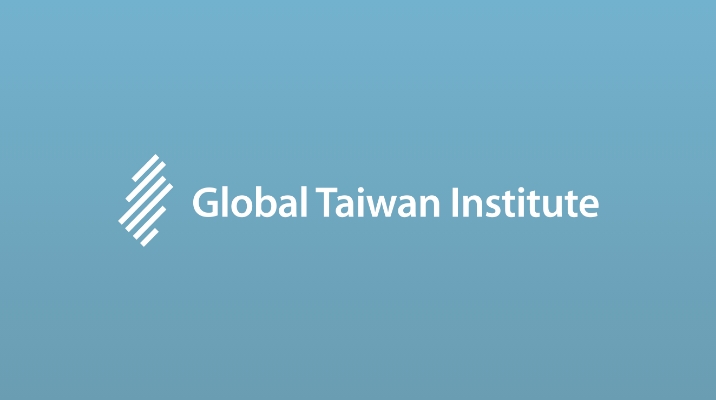Introduction
On a mid-May evening in Tokyo, Paraguayan President Santiago Peña Palacios addressed a gathering of representatives, lawmakers, and diplomats from countries without formal diplomatic relations with the Republic of China (Taiwan). Beside President Peña stood Representative Lee I-yang (李逸洋), Taiwan’s de facto ambassador to Japan. The two were addressing a trilateral “friendship reception” co-hosted by the Paraguayan Embassy and the Taipei Economic and Cultural Representative Office in Japan. “Paraguay stands proudly as a bridge between Japan and Taiwan,” President Peña declared, affirming the small landlocked South American country’s role as a connector between Taiwan and countries outside Taipei’s formal diplomatic circle. Representative Lee responded by thanking Asunción for Paraguay’s enduring support.
The reception suggests a broader pattern of Taiwan-focused diplomatic coordination hosted by Japan. That same week, Japanese Prime Minister Shigeru Ishiba welcomed President Peña for a two-way meeting. The meeting concluded with a signed memorandum of cooperation, a nod to the “Free and Open Indo-Pacific,” and an upgrade in Japan-Paraguay ties to that of “strategic partnership.”
The timing and symbolism of the two meetings were unmistakable and underscore Tokyo’s growing role in reinforcing Taiwan’s global standing.
Japan’s Diplomatic Alignment with Taiwan
Since Russia’s full-scale invasion of Ukraine began in February 2022, Japan’s foreign policy— first under the leadership of Fumio Kishida and now under Ishiba—has steadily aligned with that of Taiwan. For Japan, reinforcing Taiwan’s diplomatic space also serves its broader interest in maintaining a free, open, and rules-based Indo-Pacific, without directly provoking Beijing. Tokyo has helped expand Taiwan’s growing influence in Central and Eastern Europe and advanced Taipei’s ties with its few remaining formal diplomatic allies, including Paraguay.
In contrast to China’s overly-ambitious and ultimately abortive 17+1 framework in Central and Eastern Europe, Japan has earned trust by consistently delivering on diplomatic and economic commitments. Following his summit with Prime Minister Ishiba, President Peña suggested that Paraguay could serve as a venue for future engagement between Taiwan and other global leaders. Japan’s willingness to diplomatically elevate Taiwan creates space for its partners to confidently offer visible and creative support to Taipei. Thus, Japan’s efforts stand out as some of the most consequential in supporting Taiwan’s diplomatic relations, especially as Beijing seeks to isolate Taipei by poaching its remaining 12 diplomatic allies.
Japan’s diplomatic alignment with Taiwan has been particularly evident in Central and Eastern Europe. Tokyo’s efforts build on the groundwork laid by Taipei, whose diplomatic corps has actively cultivated informal partnerships and technical cooperation across Eastern Europe and the Pacific. Catalyzed by the COVID-19 pandemic and Russia’s war in Ukraine, countries such as Lithuania, Czechia, and Poland have emerged as key informal partners of Taiwan, including by opening a representative office, strengthening economic and technological cooperation, providing aid and assistance to Ukraine, and publicly challenging Chinese pressure. Japan’s increasing diplomatic and economic engagement in the region complements Taiwan’s existing initiatives. Tokyo supports supply chain resilience, energy security, and closer cooperation between the Euro-Atlantic and Indo-Pacific regions, particularly in relation to Ukraine–and all these initiatives align with Taiwan’s efforts.
Strengthening Ties in Europe: Lithuania as a Case Study
Further exemplifying Japan’s expanding diplomatic efforts in Central and Eastern Europe, Prime Minister Ishiba met with Lithuanian President Gitanas Nausėda in Tokyo on June 9, during the latter’s visit to the Osaka World Expo. During their meeting, both leaders reaffirmed their commitment to a “Free and Open Indo-Pacific” while deepening cooperation in areas where Taiwan maintains existing or emerging partnerships, such as Ukraine’s reconstruction, semiconductors, infrastructure development, and cybersecurity. The decision by policymakers in Vilnius and Tokyo to collaboratively engage signals the ongoing convergence of foreign policies between like-minded democracies across the Euro-Atlantic and Indo-Pacific regions, with Taiwan serving as a critical catalyst.
After Vilnius permitted the opening of the Taiwanese Representative Office (駐立陶宛台灣代表處) in Lithuania—the first representative office in Europe to feature “Taiwanese” in its title, instead of the commonly-used “Taipei”—China lashed out against the small Baltic country with diplomatic and economic retaliation. The fallout from China’s coercion provided an opportunity for Lithuania to deepen diplomatic, trade, and other ties with like-minded countries across the Indo-Pacific. By quietly supporting Lithuania, Japan is bolstering the country’s resolve in the face of coercion from Beijing, strengthening relations between Euro-Atlantic and Indo-Pacific democracies, and, most importantly, amplifying Taiwan’s international visibility. The meeting between Prime Minister Ishiba and President Nausėda serves the interests of both countries and Taiwan by demonstrating the evolving partnerships between Taiwan, Lithuania, and Japan.
Global Reinforcement Through the G7 and Beyond
Japan’s role in bolstering Taiwan’s international profile reached a peak during Tokyo’s presidency of the G7 in 2023. Under Japanese leadership, G7 communiqués referred to Taiwan more consistently and with sharper diplomatic language than in previous years. The April 2023 Foreign Ministers’ Communiqué, the May Hiroshima Summit Leaders’ Communiqué, the November Foreign Ministers’ Statement, and the December Leaders’ Statement described Taiwan Strait’s “peace and stability” as “indispensable” to the international community’s “security and prosperity.” This phrasing hadn’t appeared in earlier G7 documents. Japanese officials also highlighted Taiwan’s strategic importance in a meeting between then-Prime Minister Kishida and Ukrainian President Volodymyr Zelenskyy in Kyiv, as well as in bilateral meetings with other Euro-Atlantic leaders from Lithuania, France, the United Kingdom, and NATO.
While earlier G7 statements had acknowledged Taiwan and the importance of security in the Taiwan Strait for global stability, Japan’s presidency gave the issue greater visibility, more precise language, and stronger normative framing. Tokyo’s strategy remains constrained by its official adherence to its One-China Policy, which recognizes the People’s Republic of China as the sole legal government of all of “China.” However, Tokyo merely “fully understands and respects” Beijing’s position that Taiwan is a part of China, which requires careful navigation to avoid escalation while still signaling support for Taipei. Through measured diplomatic coordination, Tokyo has helped build a multilateral consensus that bolstered Taiwan’s position without provoking confrontation.
While the recent meeting between Japan and Paraguay demonstrated Tokyo’s continued support for one of Taiwan’s remaining diplomatic allies in Latin America, Japan has been even more proactive in the South Pacific. In February 2025, Prime Minister Ishiba met with Palauan President Surangel Whipps Jr. to reaffirm the countries’ “special relationship” and to expand cooperation in areas where Taiwan happens to be deeply engaged: including maritime security, sustainable development, and regional infrastructural development. Japan’s use of official development assistance, infrastructure finance, and technical assistance has also enhanced its appeal as a development partner by aligning closely with Taiwan’s emphasis on transparent, sustainable, and capacity-building cooperation across the Indo-Pacific.
The following month, Japan hosted the Marshall Islands President Hilda Heine, with bilateral pledges to support maritime domain awareness as well as starting talks that led to the signing of a grant for airport improvements and fisheries development. Later that year, during the 10th Pacific Islands Leaders Meeting, Prime Minister Kishida met with Tuvalu’s Prime Minister, Feleti Penitala Teo, to discuss maritime transportation, cybersecurity, and climate change adaptation. Like Paraguay, each of these Pacific states maintains diplomatic relations with Taipei rather than Beijing.
Conclusion
Japan’s engagement across Central and Eastern Europe, the G7, Latin America, and the South Pacific is more than parallel diplomacy—it serves as a replicable model for how middle powers can quietly reinforce Taiwan’s international space. By aligning with countries where Taiwan has made informal gains as well as Taipei’s remaining formal diplomatic allies, Japan has provided visibility, legitimacy, and development incentives without altering its position on cross-Strait relations. Tokyo and like-minded actors could extend this approach to other diplomatic allies of Taiwan whose commitment may be wavering, such as Haiti, St. Lucia, and the Holy See, where even modest engagement would offer meaningful diplomatic ballast.
As Taiwan works to expand its global presence while fending off pressure from Beijing, Japan has emerged as its most quietly effective partner, reinforcing Taiwan’s successes and stabilizing its risks. Much like Paraguay’s “bridge,” Japan offers diplomatic scaffolding—subtle yet vital—that helps connect Taiwan to the world. In contrast, the United States provides explicit political and military support, which deters aggression and enhances Taiwan’s international profile. These distinct approaches are complementary: Tokyo’s low-key engagement in regions of strategic engagement importance to Taipei reduces friction while deepening practical ties, while Washington’s vocal backing signals resolve and rallies broader international support.
The main point: By aligning with like-minded democratic countries, thus strengthening the international community’s ties with Taiwan, Japan amplifies Taiwan’s global standing and fortifies democratic resilience across Central and Eastern Europe, the G7, Latin America, and the South Pacific.




